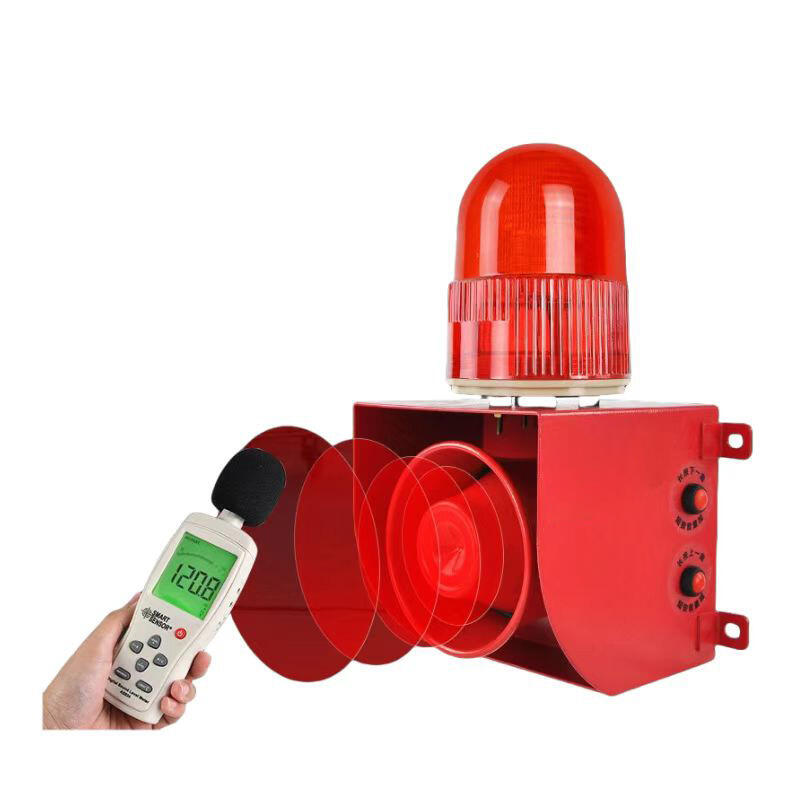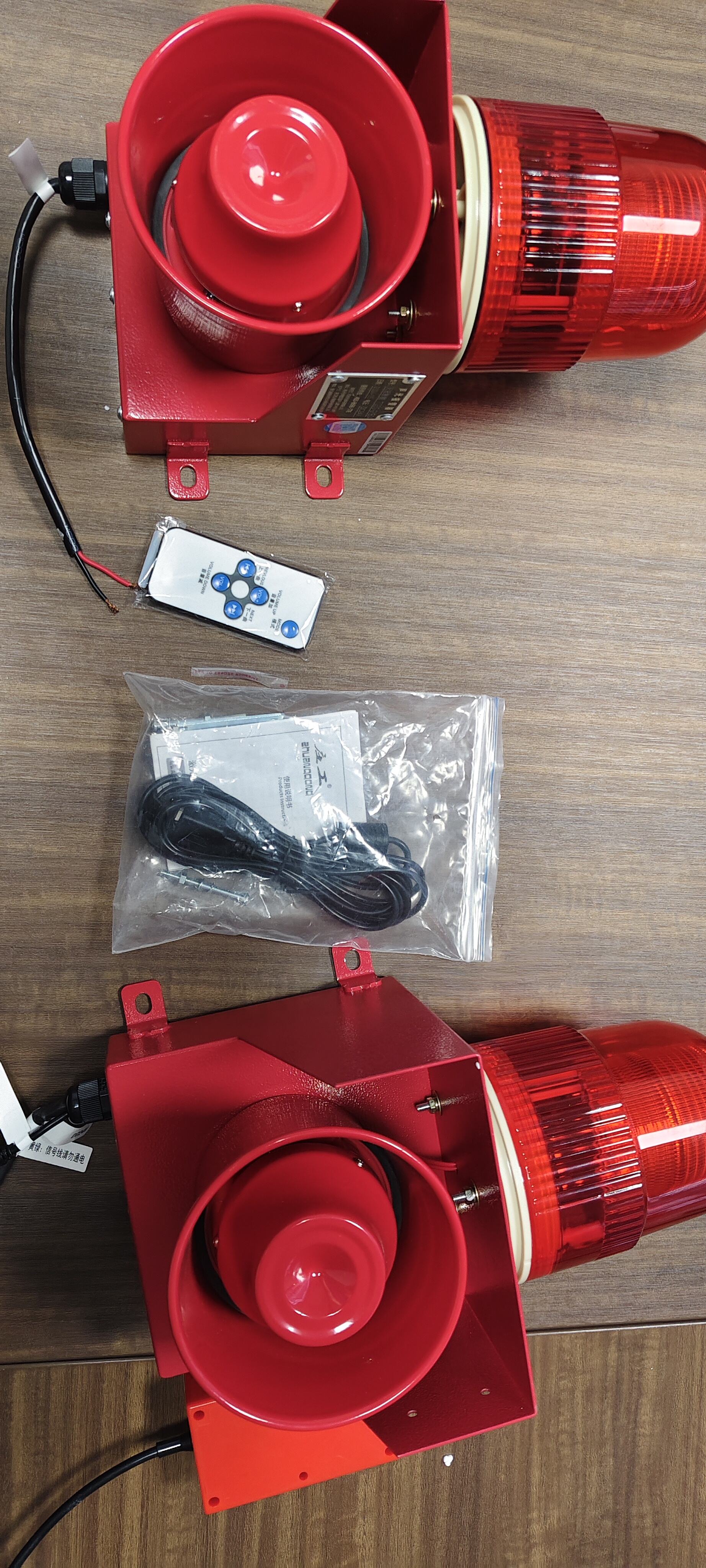Tempat konstruksi adalah lingkungan yang dinamis dan berisiko tinggi yang penuh dengan mesin berat, peralatan berharga, dan pekerja yang melakukan tugas yang kompleks. Dari akses dan pencurian tanpa izin hingga kebakaran, bahaya struktural, dan cuaca ekstrem, banyak ancaman dapat mengganggu operasi, membahayakan nyawa, dan menyebabkan kerugian finansial. Sistem alarm di lokasi konstruksi adalah alat penting yang dirancang untuk mendeteksi ancaman ini lebih awal dan memicu respons tepat waktu, meningkatkan keselamatan, keamanan, dan efisiensi. Panduan ini mengeksplorasi manfaat utama dari penggunaan alarm lokasi konstruksi sistem ini menjelaskan bagaimana melindungi pekerja, aset, dan proyek dari risiko umum.
Apa Itu Sistem Alarm Situs Konstruksi?
Aalarm lokasi konstruksi sistem adalah jaringan sensor, detektor, dan perangkat komunikasi yang dirancang untuk memantau situs konstruksi untuk potensi bahaya dan pelanggaran keamanan. Ini termasuk komponen seperti sensor gerak, kontak pintu/jendela, detektor asap, sensor getaran, dan sirene, semuanya terhubung ke panel kontrol pusat. Ketika ancaman terdeteksiseperti penyusup, kebakaran, atau gangguan peralatansistem memicu alarm suara/visual (siren, lampu berkedip) dan mengirim peringatan kepada manajer situs, tim keamanan, atau layanan darurat melalui pesan teks, aplikasi, atau panggilan telepon. Sistem modern seringkali mencakup fitur pemantauan jarak jauh, yang memungkinkan pengawasan secara real time dari lokasi di luar situs.
Sistem ini disesuaikan dengan kebutuhan unik situs konstruksi, dengan komponen yang kokoh dan tahan cuaca yang tahan debu, hujan, dan suhu ekstrim. Mereka dapat bersifat sementara (diinstal selama durasi proyek) atau permanen, beradaptasi dengan perubahan tata letak situs seiring kemajuan konstruksi.
Manfaat Utama Menggunakan Sistem Alarm di Tempat Konstruksi
Mencegah Akses Tidak Sah dan Pencurian
Tempat-tempat konstruksi menjadi sasaran utama pencurian, karena alat-alat, mesin, dan bahan-bahan berharga (seperti tembaga, baja, dan elektronik) sering kali dibiarkan tanpa pengawasan semalaman atau di luar jam kerja. Akses yang tidak sah juga bisa menyebabkan vandalisme, sabotase, atau cedera yang tidak disengaja bagi orang yang melanggar.
Sistem alarm di lokasi konstruksi mengatasi hal ini dengan menciptakan perimeter keamanan virtual. Sensor gerak, detektor inframerah, dan alarm perimeter memantau titik masuk (gerbang, pagar, dan jalan masuk), memicu peringatan jika seseorang masuk tanpa izin. Misalnya:
- Sebuah sensor gerak di dekat wadah penyimpanan yang penuh dengan alat akan mendeteksi gerakan setelah jam dan membunyikan sirine, menakut-nakuti penyusup.
- Sensor getaran pada excavator berat akan memperingatkan manajer jika seseorang mencoba memulai atau memindahkan peralatan tanpa izin.
- Alarm gerbang memberi tahu tim keamanan jika gerbang perimeter dipaksa terbuka, memungkinkan respons cepat untuk mencegat penyusup.
Dengan mencegah pencurian dan akses yang tidak sah, sistem ini mengurangi kerugian dari peralatan dan bahan yang dicuri, yang dapat menunda proyek dan meningkatkan biaya.
Mempercepat Respon terhadap Keadaan Darurat
Tempat konstruksi menghadapi keadaan darurat yang mendesak seperti kebakaran, runtuhnya struktur, tumpahan bahan kimia, atau cedera pekerja. Dalam situasi ini, setiap detik yang dihitung, keterlambatan respon dapat menyebabkan cedera yang lebih parah, kerusakan yang luas, atau bahkan kematian.
Sistem alarm di tempat konstruksi mempercepat tindakan darurat dengan segera memberi peringatan kepada orang yang tepat. Detektor asap dan sensor panas mendeteksi kebakaran pada tahap awal, memicu alarm dan memberi tahu manajer situs dan departemen pemadam kebakaran setempat. Detektor gas memantau kebocoran zat mudah terbakar atau beracun (seperti asap propana atau diesel), membunyikan alarm untuk mengevakuasi pekerja dan mencegah ledakan.
Untuk keselamatan pekerja, tombol panik atau tali tarik daruratsering dipasang di area berisiko tinggi seperti perancah atau ruang tertutupmungkinkan pekerja untuk memicu alarm secara manual jika mereka terluka atau terjebak. Sistem ini segera memberi tahu tim pertolongan pertama atau pengawas lokasi, memastikan bantuan tiba lebih cepat.
Dalam satu kasus, sistem alarm di sebuah lokasi konstruksi mendeteksi kebakaran kecil di gudang bahan dalam hitungan menit. Alarm memberi tahu petugas pemadam kebakaran dan departemen pemadam kebakaran setempat, sehingga api dapat dipadamkan sebelum menyebar ke tangki bahan bakar di dekatnya, menghindari bencana besar.
Meningkatkan Kesadaran Keselamatan Pekerja
Keselamatan pekerja adalah prioritas utama di lokasi konstruksi, di mana jatuh, kecelakaan mesin, dan bahaya struktural adalah risiko umum. Sistem alarm di lokasi konstruksi meningkatkan kesadaran keselamatan dengan memperingatkan pekerja terhadap bahaya secara real time, memastikan mereka dapat mengambil tindakan perlindungan segera.
Misalnya:
- Alarm jarak dekat memperingatkan pekerja jika mereka terlalu dekat dengan mesin yang bergerak (seperti derek atau buldoser), mengurangi risiko tabrakan.
- Sensor gerakan struktural mendeteksi pergeseran perancah atau struktur sementara, memicu alarm untuk mengevakuasi pekerja sebelum runtuh.
- Alarm cuaca (diintegrasikan dengan sistem) memperingatkan awak kapal tentang badai, angin kencang, atau petir yang akan datang, memungkinkan mereka untuk mengamankan peralatan dan mencari tempat berlindung.
Latihan alarm reguler, menggunakan mode uji sistem, juga membantu pekerja berlatih prosedur darurat, memastikan mereka tahu bagaimana menanggapi saat alarm terdengar, apakah untuk mengevakuasi, berlindung, atau mematikan peralatan. Keterkenalannya ini mengurangi kepanikan dan meningkatkan budaya keselamatan secara keseluruhan di lokasi.

Menjamin kepatuhan terhadap peraturan keselamatan
Tempat konstruksi tunduk pada peraturan keselamatan yang ketat dari badan-badan seperti OSHA (AS), HSE (UK), atau pemerintah daerah. Peraturan-peraturan ini seringkali membutuhkan tindakan untuk mencegah akses yang tidak sah, mendeteksi kebakaran, dan melindungi pekerja dari bahaya. Jika tidak mematuhi peraturan, bisa dikenakan denda, proyek terlambat, atau dituntut di pengadilan.
Sistem alarm di lokasi konstruksi membantu lokasi memenuhi persyaratan ini dengan menyediakan langkah-langkah keamanan yang terdokumentasi dan dapat diandalkan. Misalnya:
- Standar OSHA untuk keselamatan kebakaran mengharuskan sistem peringatan dini di tempat kerja dengan risiko kebakarandetektor asap dan alarm di sistem situs konstruksi memenuhi mandat ini.
- Peraturan untuk penyimpanan bahan berbahaya (seperti cat atau bahan bakar) dapat dipenuhi dengan memasang alarm di area penyimpanan untuk mendeteksi kebocoran atau akses yang tidak sah.
- Banyak yurisdiksi mengharuskan situs untuk memiliki rencana tanggap darurat dengan sistem alarm untuk memperingatkan pekerja dan layanan daruratbukti sistem alarm fungsional membantu menunjukkan kepatuhan selama pemeriksaan.
Dengan memenuhi standar peraturan, sistem alarm di lokasi konstruksi melindungi bisnis dari hukuman dan tanggung jawab hukum.
Mengurangi Biaya Asuransi
Proyek konstruksi membawa biaya asuransi yang signifikan, yang mencakup risiko seperti kerusakan properti, pencurian, tanggung jawab karena cedera, dan penundaan proyek. Penyedia asuransi sering menawarkan premi yang lebih rendah kepada situs dengan langkah-langkah keamanan dan keselamatan yang kuat, karena mereka menimbulkan risiko klaim yang lebih rendah.
Sistem alarm di lokasi konstruksi dipandang oleh perusahaan asuransi sebagai alat pengurangan risiko yang proaktif. Dengan mencegah pencurian, mengurangi kerusakan akibat kebakaran, dan mengurangi risiko kecelakaan, hal itu mengurangi kemungkinan klaim asuransi yang mahal. Banyak perusahaan asuransi menawarkan diskon 10~20% pada premi untuk situs dengan sistem alarm bersertifikat, karena mereka menunjukkan komitmen terhadap manajemen risiko.
Sepanjang proyek, penghematan ini dapat mengimbangi biaya pemasangan dan pemeliharaan sistem alarm, menjadikannya investasi yang hemat biaya.
Menyediakan Pemantauan dan Kontrol Jarak Jauh
Manajer lokasi konstruksi sering mengawasi beberapa lokasi atau perlu memantau operasi dari kantor di luar lokasi. Sistem alarm situs konstruksi modern memungkinkan pemantauan jarak jauh, memberikan visibilitas waktu nyata kepada manajer tentang keamanan dan keselamatan situs.
Melalui aplikasi seluler atau platform web, manajer dapat:
- Periksa status alarm dan terima peringatan instan di ponsel mereka, bahkan ketika mereka tidak di tempat.
- Melihat rekaman langsung atau rekaman dari kamera keamanan yang terintegrasi dengan sistem alarm, memverifikasi ancaman (misalnya, membedakan antara alarm palsu dan perampokan nyata).
- Aktifkan atau matikan sistem dari jarak jauh, memungkinkan pekerja yang berwenang untuk mengakses situs di luar jam kerja biasa tanpa mengorbankan keamanan.
- Pelacak waktu respons terhadap alarm, memastikan tim keamanan atau layanan darurat bertindak cepat.
Remote control ini sangat berharga untuk situs besar atau proyek dengan beberapa fase, di mana pengawasan di tempat tersebar tipis. Hal ini memungkinkan manajer untuk mengatasi masalah dengan cepat, bahkan ketika mereka tidak hadir secara fisik.
Meminimalkan Keterlambatan Proyek
Proyek konstruksi berjalan dengan jadwal yang ketat, dan penundaan bisa mahal, baik karena pencurian bahan, kerusakan peralatan, atau insiden keamanan. Sistem alarm di tempat konstruksi meminimalkan penundaan ini dengan mencegah gangguan sebelum terjadi.
Misalnya:
- Dengan mencegah pencurian, sistem ini memastikan bahan dan peralatan tersedia saat dibutuhkan, menghindari penundaan dalam pekerjaan penjadwalan.
- Deteksi kebakaran dini membatasi kerusakan pada alat dan struktur, memungkinkan pekerjaan untuk dilanjutkan dengan cepat setelah insiden.
- Tanggapan cepat terhadap cedera pekerja (melalui alarm panik) mengurangi waktu pemulihan dan menjaga kru tetap beroperasi.
Dalam satu kejadian, sistem alarm di lokasi konstruksi mencegah pencurian kabel tembaga, yang bisa menunda pekerjaan listrik hingga berpekan-pekan. Alarm tersebut mengusir para pencuri, dan proyek tetap berjalan sesuai jadwal.
Beradaptasi terhadap Perubahan Kebutuhan Lokasi
Lokasi konstruksi terus berkembang setiap hari, dengan struktur, peralatan, dan zona kerja baru yang ditambahkan seiring kemajuan proyek. Sistem alarm yang baik bersifat fleksibel, memungkinkan pengaturan ulang yang mudah untuk menyesuaikan dengan perubahan tata letak situs.
Sensor sementara dan perangkat nirkabel dapat dipindahkan sesuai pergeseran zona kerja—misalnya, memindahkan sensor gerak dari area fondasi ke lantai atas bangunan baru saat konstruksi berlanjut. Teknologi nirkabel menghilangkan kebutuhan akan kabel rumit, sehingga memudahkan ekspansi sistem untuk menjangkau area baru, seperti tambahan lapak penyimpanan atau barak pekerja.
Kemampuan penyesuaian ini memastikan sistem alarm tetap efektif selama masa pelaksanaan proyek, dari awal peletakan fondasi hingga inspeksi akhir.
Contoh Dunia Nyata Manfaat Sistem Alarm Situs Konstruksi
Mencegah Pencurian di Situs Pembangunan Perumahan
Sebuah lokasi konstruksi rumah terganggu oleh pencurian berulang alat-alat listrik dan pipa tembaga, yang menunda pembangunan rumah. Setelah memasang sistem alarm di tempat konstruksi dengan sensor gerak, alarm gerbang, dan pemantauan 24 jam sehari, pencurian berhenti sepenuhnya. Sirene dan tanda-tanda yang terlihat dari sistem ini menghalangi pencuri potensial, dan situs selesai proyek tepat waktu.
Keamanan Api di Situs Konstruksi Komersial
Selama pembangunan sebuah pusat perbelanjaan, kebakaran kecil terjadi di area penyimpanan cat. Sistem alarm lokasi mendeteksi asap segera, membunyikan alarm dan memberi tahu departemen pemadam kebakaran dan manajer situs. Petugas pemadam kebakaran tiba dalam waktu 10 menit, memadamkan api sebelum menyebar ke bahan mudah terbakar di dekatnya. Sistem ini cepat merespon dan menghemat sekitar $500.000 dari kerusakan dan mencegah keterlambatan proyek.
Keselamatan Pekerja di Situs Pembangunan Jalan Raya
Sebuah proyek perluasan jalan raya menggunakan sistem alarm di lokasi konstruksi dengan sensor jarak dekat di dekat mesin berat. Jika seorang pekerja terlalu dekat dengan crane yang bergerak, sistem ini akan memicu alarm keras dan lampu berkedip, memperingatkan operator crane untuk berhenti. Kecelakaan hampir menghindari cedera serius, menyoroti peran sistem dalam melindungi pekerja.
FAQ
Jenis sensor apa saja yang ada di sistem alarm di lokasi konstruksi?
Sensor umum termasuk detektor gerak, detektor asap / panas, sensor getaran (untuk peralatan), alarm perimeter (untuk pagar / gerbang), detektor gas, dan sensor kedekatan (untuk mesin). Beberapa sistem juga mencakup tombol alarm bagi pekerja dan perangkat pemantauan cuaca.
Apakah sistem alarm di tempat konstruksi dapat membedakan antara alarm palsu dan ancaman nyata?
Sistem modern menggunakan teknologi canggih untuk mengurangi alarm palsu. Sensor gerak dapat mengabaikan hewan kecil, dan sensor getaran dikalibrasi untuk mendeteksi aktivitas manusia atau manipulasi peralatan, bukan angin atau getaran kecil. Kamera yang terintegrasi dengan sistem memungkinkan manajer untuk memverifikasi secara visual alarm sebelum mengirim tim.
Bagaimana sistem alarm di lokasi konstruksi mengirimkan peringatan?
Peringatan dikirim melalui pesan teks, pemberitahuan aplikasi seluler, email, atau panggilan telepon ke kontak yang ditunjuk (manajer situs, tim keamanan, layanan darurat). Beberapa sistem juga membuat suara sirine dan lampu berkedip-kedip di tempat kerja untuk memperingatkan pekerja dan menghalangi penyusup.
Apakah sistem alarm di lokasi konstruksi cocok untuk proyek kecil?
Ya, aku tahu. Bahkan tempat-tempat kecil mendapat manfaat dari sistem alarm dasar, seperti sensor gerak untuk penyimpanan alat dan detektor asap. Banyak penyedia menawarkan sistem yang dapat diskalakan, memungkinkan proyek kecil untuk memulai dengan komponen penting dan menambahkan lebih banyak fitur sesuai kebutuhan.
Berapa banyak perawatan yang dibutuhkan sistem alarm di lokasi konstruksi?
Pemeliharaan rutin mencakup pengujian sensor dan alarm setiap bulan, mengganti baterai pada perangkat nirkabel, dan memeriksa kabel (jika kabel keras). Sebagian besar sistem memiliki fitur diagnostik diri yang memperingatkan manajer tentang masalah seperti baterai rendah atau sensor yang rusak, memastikan keandalan.
Daftar Isi
- Apa Itu Sistem Alarm Situs Konstruksi?
-
Manfaat Utama Menggunakan Sistem Alarm di Tempat Konstruksi
- Mencegah Akses Tidak Sah dan Pencurian
- Mempercepat Respon terhadap Keadaan Darurat
- Meningkatkan Kesadaran Keselamatan Pekerja
- Menjamin kepatuhan terhadap peraturan keselamatan
- Mengurangi Biaya Asuransi
- Menyediakan Pemantauan dan Kontrol Jarak Jauh
- Meminimalkan Keterlambatan Proyek
- Beradaptasi terhadap Perubahan Kebutuhan Lokasi
- Contoh Dunia Nyata Manfaat Sistem Alarm Situs Konstruksi
-
FAQ
- Jenis sensor apa saja yang ada di sistem alarm di lokasi konstruksi?
- Apakah sistem alarm di tempat konstruksi dapat membedakan antara alarm palsu dan ancaman nyata?
- Bagaimana sistem alarm di lokasi konstruksi mengirimkan peringatan?
- Apakah sistem alarm di lokasi konstruksi cocok untuk proyek kecil?
- Berapa banyak perawatan yang dibutuhkan sistem alarm di lokasi konstruksi?

